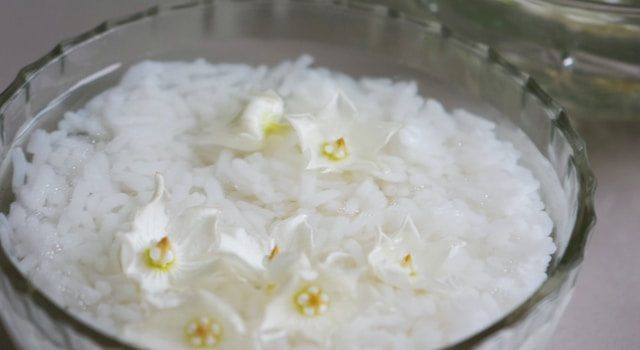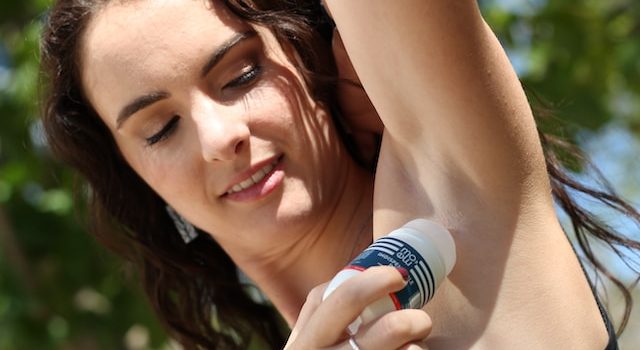Sweating is a natural process that our bodies go through to regulate temperature and detoxify, but it can also lead to unpleasant body odor. No one wants to feel self-conscious about their smell throughout the day, which is why deodorant has become a staple in many people’s daily routine. However, have you ever noticed that your deodorant seems less effective as the day goes on? Fear not! We’ve got some tips and tricks for maximizing your deodorant’s effectiveness and keeping you feeling fresh all day long. Get ready to say goodbye to underarm embarrassment and hello to 24-hour protection!
The Science of Sweat and Deodorant
Our bodies are equipped with millions of sweat glands that produce perspiration as a way to cool us down when we get too hot. However, the bacteria on our skin can break down this sweat and create an unpleasant odor. That’s where deodorant comes in!
Deodorants work by either killing or masking the bacteria responsible for causing body odor. Some deodorants also contain antiperspirant ingredients like aluminum-based compounds, which block sweat ducts and reduce sweating.
While many people may associate sweating with being gross or unhygienic, it’s important to remember that it’s a natural bodily function and has its benefits! Sweating helps regulate body temperature, flush toxins out of the body, and even boosts endorphins.
When choosing a deodorant, it’s important to consider your personal needs and preferences. Do you prefer a stick or spray? Unscented or scented? Antiperspirant or not?
By understanding the science behind both sweating and deodorizing products, you can make informed decisions about what will work best for your unique body chemistry.
Different Types of Deodorant
Deodorants come in different types and forms, each with its unique features. The most common types of deodorants are stick, spray, roll-on, and cream. Stick deodorants are solid and easy to apply; they glide smoothly on the skin without leaving any residue behind. On the other hand, spray deodorants provide a quick and refreshing burst of fragrance that can last for hours.
Roll-ons have a similar consistency to liquid soap; they are ideal for people with sensitive skin as they contain fewer irritants than some other types of deodorant. Creams offer long-lasting protection against sweat and odor while moisturizing the skin.
Some brands also produce natural or organic versions of these types of deodorant that use plant-based ingredients instead of harsh chemicals.
When choosing a type of deodorant it is also important to consider your personal preferences in terms of scent and application method. Ultimately selecting the right one will depend on factors such as your lifestyle habits or whether you have sensitive skin that requires special care when using specific products.
How to Choose the Right Deodorant for You
When it comes to choosing the right deodorant, there are a few key factors to consider. First and foremost, think about your personal preferences in terms of scent and formulation. Do you prefer a solid stick or a spray? Are you looking for something with a subtle fragrance or one that packs more of a punch?
Next, take into account any skin sensitivities or allergies you may have. Look for products that are labeled hypoallergenic or formulated specifically for sensitive skin.
Another important factor is the level of protection you need. If you tend to sweat heavily, look for antiperspirants that contain aluminum chloride – these will help reduce sweating by blocking sweat glands.
It’s also worth considering whether you want an all-natural option or if you’re comfortable using synthetic ingredients. There are plenty of both on the market – just do your research to find one that aligns with your values.
Don’t be afraid to try out different options until you find the perfect fit. Everyone’s body chemistry is different, so what works well for someone else might not work as effectively for you. Remember: finding the right deodorant is all about trial and error!
The Best Way to Apply Deodorant
Applying deodorant is a daily routine for many people, but are you doing it the right way? Here are some tips on how to apply deodorant effectively.
Make sure your underarms are clean and dry before applying deodorant. This helps the product stick better to your skin and prevents any bacteria from building up.
Next, use only a small amount of deodorant. A pea-sized amount for each armpit should suffice. Applying too much can actually have the opposite effect and cause more sweat and odor.
When applying, be gentle and don’t rub too hard as this can irritate sensitive skin. Simply swipe once or twice over each armpit with slow movements.
If using a roll-on or gel type of deodorant, allow it to dry completely before putting on clothes to avoid staining them. For spray types of deodorants, hold the bottle at least six inches away from your underarms while spraying.
Remember that everyone’s body chemistry is different so what works for one person may not work for another. Don’t be afraid to try different brands or types of deodorants until you find one that works best for you!
By following these simple steps, you’ll ensure that your trusty ally against sweat will keep working all day long!
Tips for Making Your Deodorant Last Longer
To keep your deodorant effective for as long as possible, there are a few tips and tricks you can follow. First of all, make sure your underarms are clean and dry before applying any deodorant. This will help the product adhere better to your skin and prevent it from rubbing off too quickly.
Another useful tip is to apply your deodorant at night before going to bed instead of in the morning. This allows the active ingredients more time to work their magic while you sleep, giving you 24-hour protection against sweat and odor.
If you’re someone who sweats heavily or frequently throughout the day, consider using an antiperspirant rather than a regular deodorant. Antiperspirants contain aluminum-based compounds that help reduce sweating by blocking sweat ducts.
It’s also important not to overapply your deodorant or antiperspirant. Using too much can lead to buildup on clothing or skin irritation, which can cause discomfort throughout the day.
Store your deodorant properly in a cool, dry place away from direct sunlight or high temperatures. This will help preserve its effectiveness and prevent it from melting or becoming less potent over time.
By following these simple tips for making your deodorant last longer, you’ll be able to stay fresh and confident all day long without having to constantly reapply!
When to Replace Your Deodorant
Knowing when to replace your deodorant is essential for keeping it effective and protecting against sweat and odor. There are a few signs that can indicate it’s time to get a new stick, so keep an eye out for these cues.
One of the most noticeable indications is when the scent or strength begins to fade. If you find yourself reapplying throughout the day because your deodorant isn’t lasting as long as it used to, then it’s probably time for a replacement.
Another sign is if you notice any changes in consistency or texture. Clumping, drying out, or becoming too soft can all point towards needing a new stick. Sometimes this can be due to environmental factors like heat exposure or moisture buildup.
Additionally, if you’ve had your current deodorant stick for more than six months without finishing it off completely, then it’s best to replace with fresh stock. This helps ensure maximum freshness and effectiveness over time.
Paying attention to these indicators will help keep your deodorant working effectively around the clock.
Conclusion
Good hygiene is essential to keep yourself and those around you healthy. Deodorants are an essential part of personal care routines for many people, but not all deodorants work the same way. Finding a deodorant that works best for your body chemistry and lifestyle is important.
Consider all the factors when choosing a deodorant: type, strength, scent, active ingredients, application method, etc. Don’t be afraid to try out different brands or types until you find what works best for you.
Remember to apply your chosen deodorant correctly in order to maximize its effectiveness throughout the day. And make sure you replace it regularly to avoid any potential risks of bacterial growth or reduced effectiveness over time.
By following these tips on how to keep your deodorant effective, you can ensure 24-hour protection against sweat and odor while feeling confident and fresh every day!
















